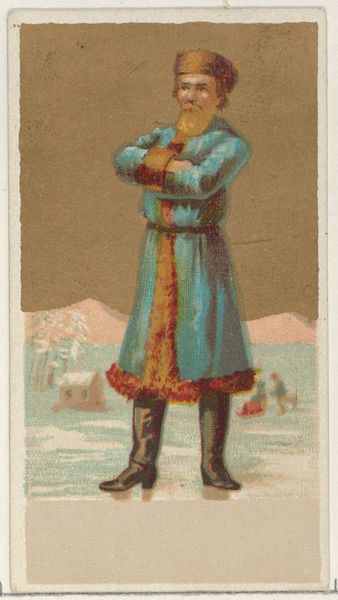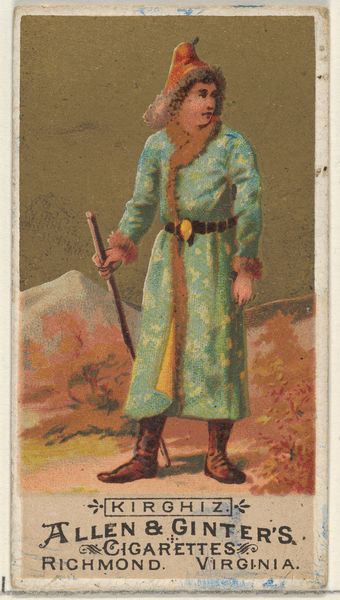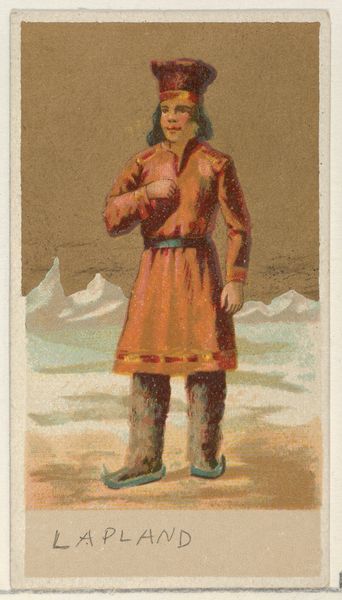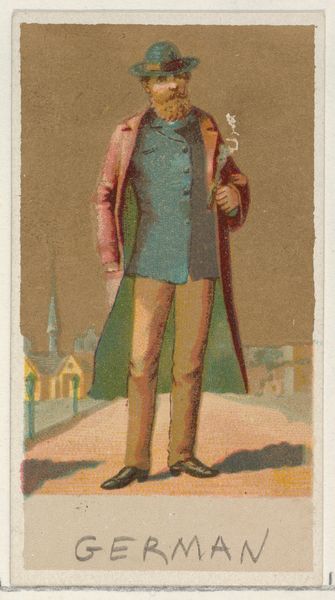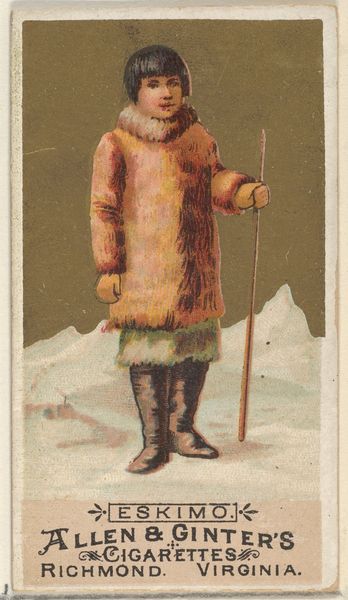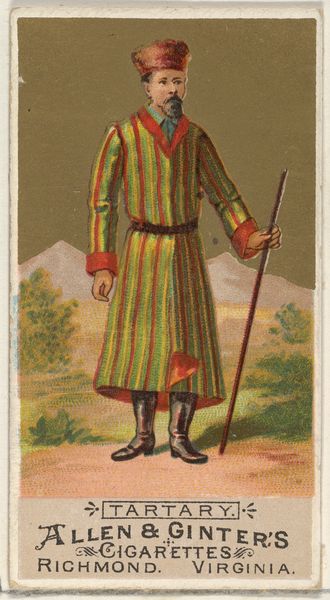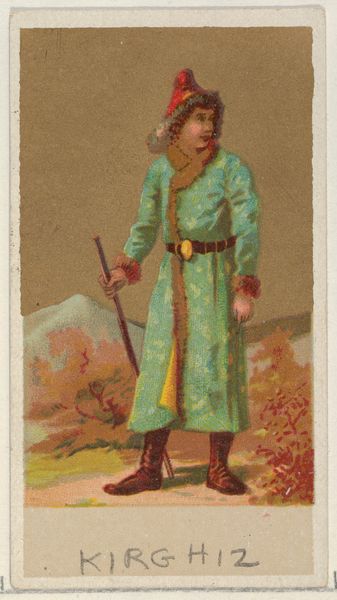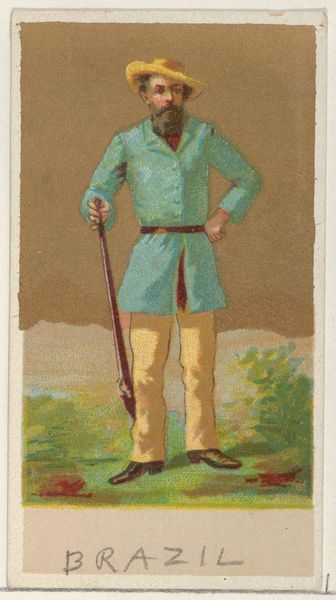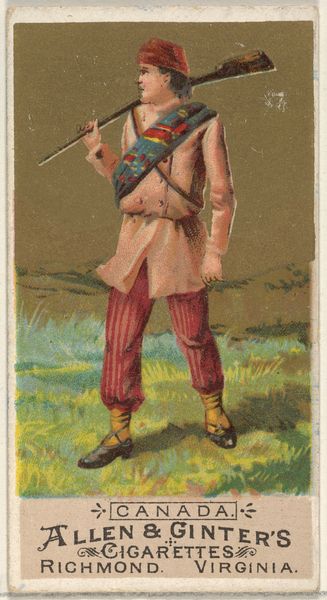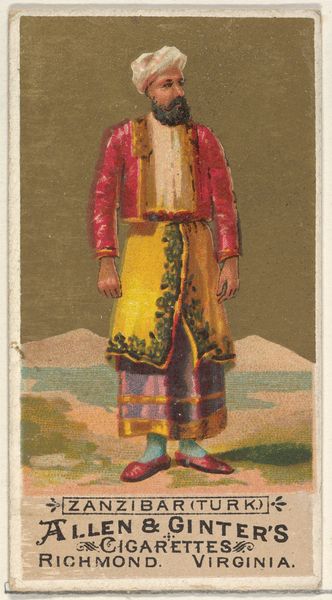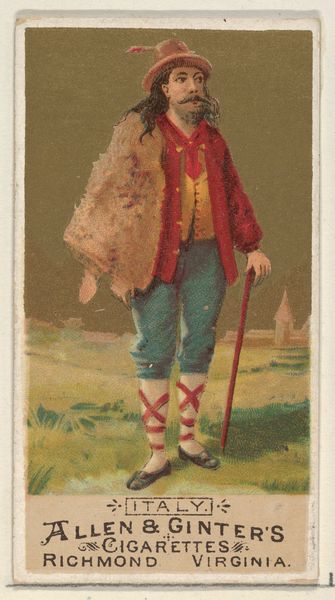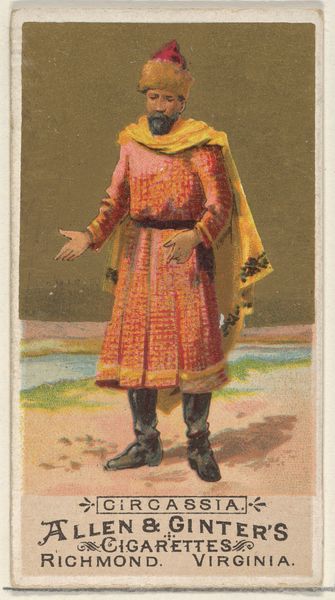
Russia, from the Natives in Costume series (N16) for Allen & Ginter Cigarettes Brands 1886
0:00
0:00
drawing, print
#
portrait
#
drawing
# print
#
coloured pencil
#
men
#
watercolour illustration
#
genre-painting
#
portrait art
Dimensions: Sheet: 2 3/4 x 1 1/2 in. (7 x 3.8 cm)
Copyright: Public Domain
Curator: Looking at "Russia, from the Natives in Costume series" by Allen & Ginter, created around 1886, what strikes you initially? Editor: The materiality is fascinating; it looks like a colored pencil drawing imitating a watercolor. But it’s all underpinned by this promotional function, advertising cigarettes—it complicates how we consider "artistic" skill and labor. Curator: Precisely. The print deftly balances visual appeal with its commercial purpose. I'm intrigued by the composition; the figure dominates the frame, creating a powerful symbolic representation of "Russia". What semiotic elements stand out for you? Editor: Certainly the fur trim: immediately signaling cold, wealth, and a specific regional identity. We should consider the actual source and processing of this fur in late 19th century economies. Whose labor created that commodity? Whose land was appropriated? Curator: Interesting, and indeed that materiality connects directly to social and economic structures. Back to formalism, consider how the artist contrasts the rigid posture of the man with the dynamic play of the children behind him. The stark difference invites us to analyze the visual symbolism. Editor: The composition presents a highly controlled, almost authoritarian figure imposed upon a carefree snowy scene, that seems propagandistic now, looking at the source: a mass-produced cigarette card, intended for broad consumption and explicitly reinforcing imperial, economic relations. Curator: Exactly. Viewing this through a formal lens reveals layers of representation. How the line work itself depicts depth. Editor: It certainly forces you to question our modern impulse to categorize. The image acts simultaneously as art object, advertisement, historical document, and so much more! Curator: An excellent point. Reflecting on the dialogue we've had, the artwork embodies the intersection of material culture and its symbolic function, demonstrating a commercial era that continues to resonate. Editor: It is true. It prompts us to think more deeply about the global context within which it was produced, pushing viewers to reckon with the realities obscured by that sort of manufactured, fleeting image.
Comments
No comments
Be the first to comment and join the conversation on the ultimate creative platform.
